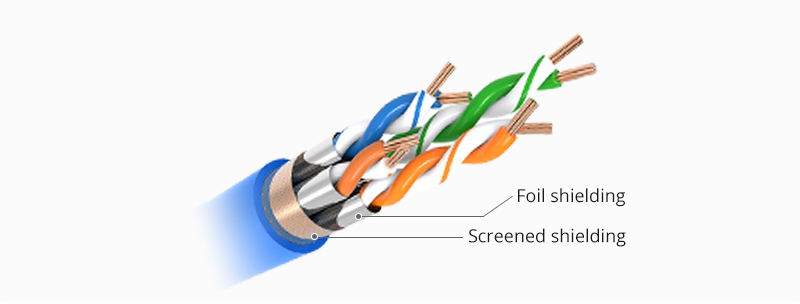Ethernet twisted pair cables, a ubiquitous networking solution in Dubai, UAE, are vital for data transmission. These cables consist of copper wire pairs twisted together, offering reliable connectivity for various devices, from computers to routers. They come in different categories like Cat 5e and Cat 6, each designed for specific data speeds and applications. Ethernet twisted pair cables play a crucial role in keeping Dubai and the UAE connected in today’s digital age.
I. Shielded Twisted Pair

- Improved Signal Quality: Shielded twisted pair (STP) cables offer excellent electromagnetic interference (EMI) protection, ensuring signal integrity.
- Enhanced Data Transmission: STP cables are ideal for high-speed data transmission, reducing data loss and signal degradation.
- Security Benefits: The shielding provides added security by preventing eavesdropping and signal interception.
- Reduced Crosstalk: STP cables improve network performance by reducing crosstalk and averting data collisions.
- Versatility: STP cables are suitable for various applications, from Ethernet networks to industrial environments.
- Durability: STP cables are stronger and less prone to damage because of the additional protection.
- Cost-Effective Solution: STP cables are a cost-effective choice for critical data transmission needs.
II. Twisted Pair Cable is Used For

- Versatile Connectivity: Twisted pair cable is commonly used for various applications, from data transmission to telecommunication.
- Two Insulated Wires: They minimize electromagnetic interference by being made up of two insulated copper wires twisted together.
- CAT Categories: Twisted pair cables come in various categories like CAT5, CAT6, and CAT7, each offering different levels of performance.
- Ethernet Connectivity: They are widely used for Ethernet connections in homes and businesses.
- Affordability: Twisted pair cables are cost-effective, making them a popular choice for networking solutions.
- Data Security: The twisting of wires helps prevent data leakage, enhancing security.
- Distance Limitations: While effective, they have distance limitations for data transmission, typically up to 100 meters.
- Easy Installation: They are user-friendly since they are simple to install and uninstall.
- Common Applications: Used in phone lines, local area networks (LANs), and even in audio and video transmission.
- Adaptability: Twisted pair cables have evolved with advancements in technology, ensuring they remain relevant in the modern world.
III. Ethernet Twisted Pair Cable

- A communication line known as an Ethernet Twisted Pair comprises two copper wires that are insulated and twisted together.
- Crosstalk and electromagnetic interference (EMI) are lessened by the wires’ twisting.
- The most popular kind of cable used in local area networks (LANs) is Ethernet Twisted Pair cable.
- Unshielded twisted pair (UTP) and shielded twisted pair (STP) are the two primary varieties of Ethernet twisted pair cable.
- UTP cable is more common and less expensive than STP cable.
- Although STP cable is more expensive and more complex to install than UTP cable, it is more resistant to EMI and crosstalk.
- Twisted pair Ethernet cable is available in a variety of categories, each of which is capable of supporting different speeds.
- The most common category of twisted pair Ethernet cable for LANs is Category 5e (Cat5e), which can support speeds up to 1 gigabit per second (Gbps).
- Category 6 (Cat6) twisted pair Ethernet cable can support speeds up to 10 Gbps.
A. Twisted Pair Cable in Computer Network
- Types: Unshielded twisted pair (UTP) and shielded twisted pair (STP)
- Categories: Cats 5e, 6a, 6A’s, and 8
- Uses: LAN connectivity for printers, switches, routers, IP cameras, and PoE devices
- Benefits: comparatively cheap, simple to set up, and capable of high speeds
- Ethernet: The most popular kind of cable used in Ethernet networks is twisted pair cable. Cat5e and Cat6 cables are typically used for home and office networks, while Cat6A and Cat8 cables are used for more demanding applications, such as data centers and high-performance gaming networks.
- Telephone: Twisted pair cable is also used for telephone lines. DSL (digital subscriber line) service uses twisted pair cable to deliver high-speed internet access to homes and businesses.
- PoE (Power over Ethernet): PoE devices can receive power over the same twisted pair cable that they use for data transmission. This can lower the cost of cabling and ease installation.
B. Why Ethernet Cables Are Twisted?
Twisted Ethernet cables minimize crosstalk and electromagnetic interference (EMI), which can impede data transfer. Twisting the wires together helps to cancel out the magnetic fields created by the flowing current, which allows the signal to be transmitted more clearly and reliably.